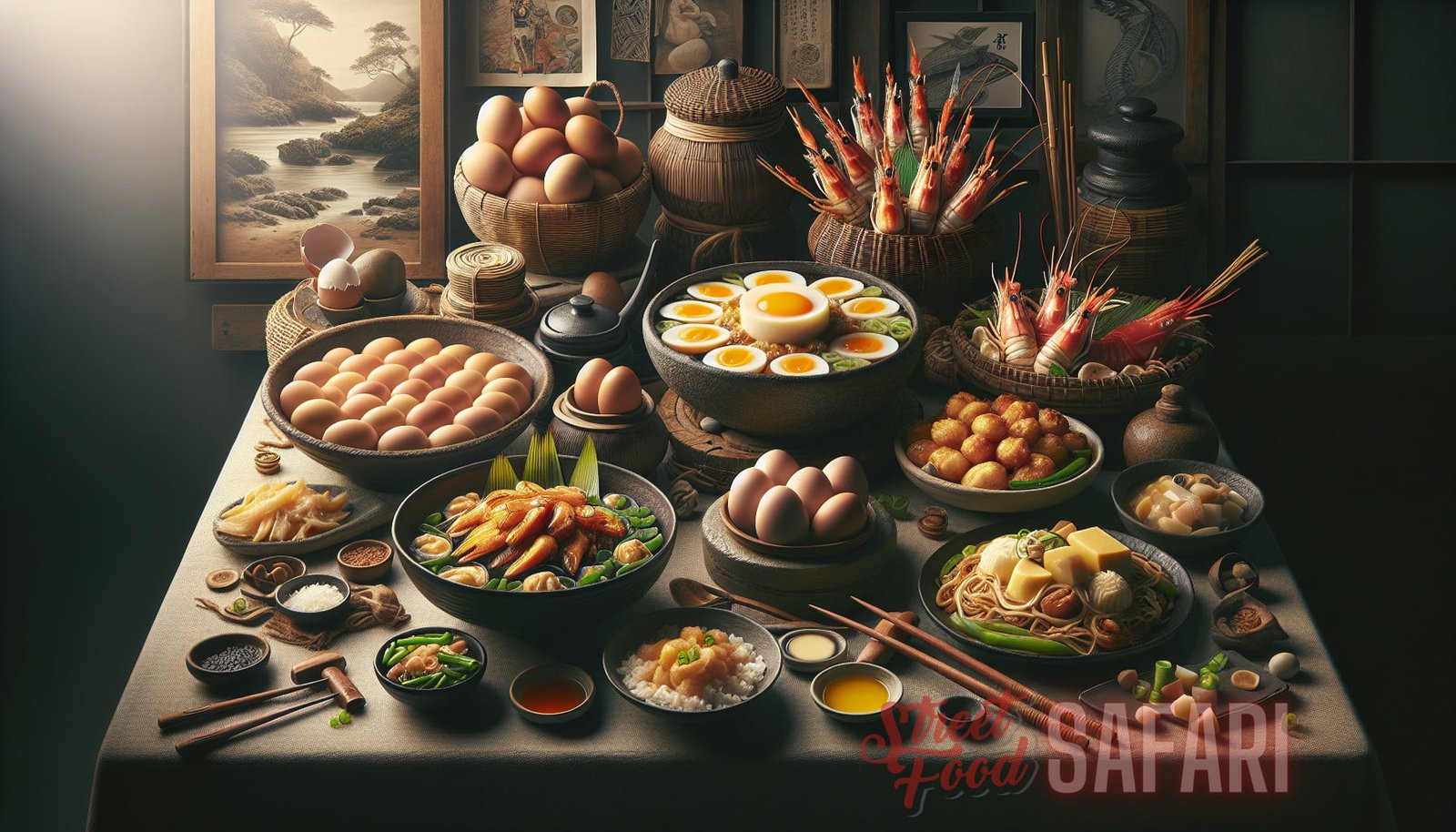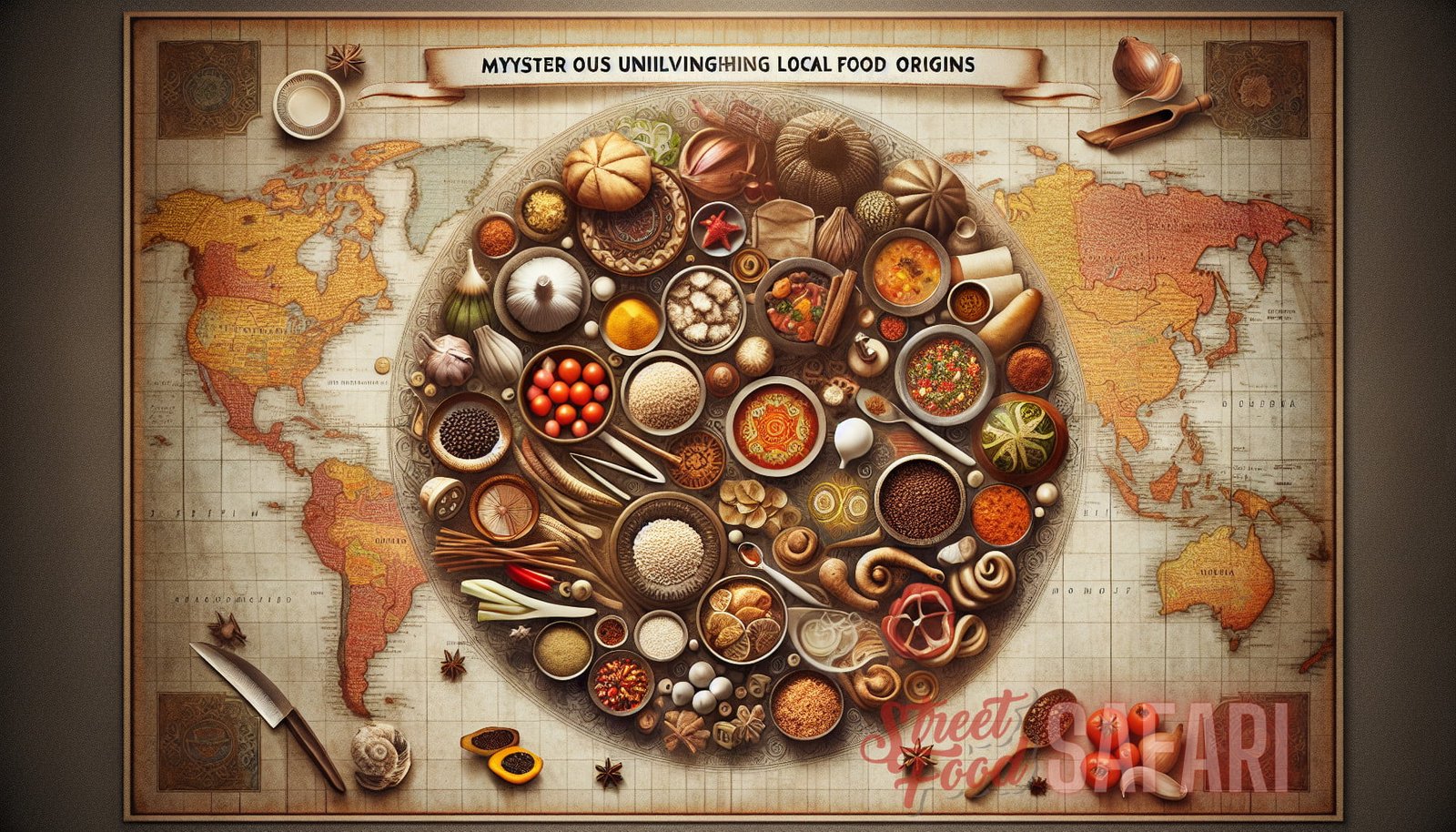Introduction
When it comes to culinary exploration, there’s always a sense of excitement in discovering and indulging in local delicacies. One can unearth hidden culinary treasures that have been passed down through generations, preserving the essence of a region’s culture and history. These forgotten gems bring a unique flavor to the table and allow us to explore different tastes and traditions from around the world.
In this article, we will delve into the world of local delicacies, unearthing some of the most interesting and lesser-known dishes from various regions. From remote villages to bustling cities, we will travel far and wide, across continents and oceans, in search of these timeless culinary treasures. So, let’s begin our journey of discovery and taste the flavors of the world!
Asia
1. Balut – Philippines
Heading over to the Philippines, we encounter a delicacy that is not for the faint of heart. Balut is a fertilized duck egg that is boiled and eaten from the shell. This unique dish is often considered an acquired taste, with locals praising its rich and savory flavor. Balut is typically enjoyed as a street food snack, and it’s not uncommon to see vendors selling these eggs in busy marketplaces. While it may seem unusual to some, balut is deeply ingrained in Filipino culture and is definitely worth a try for the adventurous eater.
Internal Links: – Street Food Safari Article – Street Food Safari Article2. Natto – Japan
Japan is known for its unique food culture, and one of the lesser-known delicacies is natto. This traditional Japanese dish consists of fermented soybeans and is often enjoyed as a breakfast staple. Natto has a distinct flavor and a sticky texture that can be an acquired taste for some. It is often served with rice or in a sushi roll, adding a tangy and earthy element to the overall taste. Natto is not only delicious but also packed with nutrients, making it a popular choice among health-conscious individuals.
3. Durian – Southeast Asia
Moving further south in Southeast Asia, we come across the infamous durian. Known as the “king of fruits,” durian is a tropical fruit with a strong aroma and a custard-like texture. While its taste is loved by many, the smell can be quite overwhelming for first-timers. Durian is highly valued in many Southeast Asian countries and is often used in various desserts and sweet dishes. It’s a one-of-a-kind delicacy that divides opinions but is definitely an experience worth trying.
Africa
1. Injera – Ethiopia
Injera is a staple food in Ethiopia and Eritrea, and it holds a special place in the hearts and stomachs of locals. This spongy, sourdough flatbread is made from fermented teff flour and is typically used as a utensil to scoop up stews and sauces. Injera has a unique taste and texture that pairs perfectly with the flavorful Ethiopian cuisine. Its popularity has spread beyond Africa, with many Ethiopian and Eritrean restaurants around the world serving this signature delicacy.
2. Biltong – South Africa
Biltong is a type of dried and cured meat popular in South Africa. It is similar to beef jerky but with its own distinct flavor and process. Biltong is made from cuts of beef or game meat, which are seasoned with spices and then air-dried. The result is a flavorful, chewy snack that is enjoyed by locals and tourists alike. Biltong is often eaten as a snack or used as an ingredient in various South African dishes.
3. Fufu – West Africa
Fufu is a staple food in many West African countries, including Ghana, Nigeria, and Cameroon. It is made by pounding boiled starchy vegetables like cassava, plantains, or yams until they form a smooth and stretchy dough-like consistency. Fufu is typically served with soups or stews and is often eaten with bare hands. It has a neutral taste that complements the bold flavors of West African cuisine. Fufu is not only a delicious delicacy but also a cultural tradition that brings people together.
Europe

1. Lángos – Hungary
Lángos is a popular street food in Hungary that has been enjoyed for centuries. This deep-fried flatbread is made from a dough mixture of flour, water, yeast, and salt. It is then topped with various ingredients like garlic, sour cream, cheese, and sausage. Lángos has a crispy exterior and a soft, fluffy interior, making it a delightful treat to indulge in. It is often enjoyed as a snack or even as a meal, satisfying cravings with its rich flavors.
2. Haggis – Scotland
Haggis is a traditional Scottish dish that is often associated with Scottish cuisine. It is made by stuffing a sheep’s stomach with a mixture of minced sheep’s heart, liver, and lungs, along with oats, onions, and various spices. Although its ingredients may sound unusual to some, haggis is a beloved delicacy in Scotland, especially during festivities like Burns Night. The dish is typically served with mashed potatoes (tatties) and turnips (neeps), creating a hearty and flavorful meal.
3. Smørrebrød – Denmark
Smørrebrød is an open-faced sandwich from Denmark that showcases the simplicity and elegance of Danish cuisine. It traditionally consists of a slice of buttered rye bread topped with various ingredients like cured meats, fish, cheeses, and vegetables. Smørrebrød is often artistically arranged and can be found in numerous variations, catering to different tastes and preferences. It is typically enjoyed for lunch or as a light dinner and is considered a cultural icon in Denmark.
The Americas
1. Poutine – Canada
Poutine is a Canadian dish that has gained international popularity over the years. It consists of crispy french fries smothered in cheese curds and topped with hot gravy. The combination of flavors creates a heavenly blend of savory, cheesy, and indulgent goodness. Poutine is a comfort food that is enjoyed by Canadians across the country and has even inspired variations worldwide. It’s a must-try for anyone looking to explore Canadian cuisine.
2. Feijoada – Brazil
Feijoada is often referred to as Brazil’s national dish, and it has deep roots in the country’s culinary tradition. This hearty stew is made with black beans, mixed meats (typically pork), and various seasonings. Feijoada is slow-cooked to develop a rich and complex flavor profile. It is often served with rice, collard greens, farofa (toasted cassava flour), and oranges. This traditional dish brings people together, making it a centerpiece of family gatherings and celebrations in Brazil.
3. Jollof Rice – West Africa
Jollof rice is a flavorful and vibrant dish that is a staple in many West African countries, including Nigeria, Ghana, and Senegal. It is made by cooking rice with tomatoes, onions, peppers, and various spices like thyme, curry, and bay leaves. Jollof rice is known for its rich reddish color and delicious taste. It is often served with grilled meat, fish, or vegetables, creating a balanced and satisfying meal. Jollof rice is a true culinary gem that showcases the diversity and complexity of West African cuisine.
Conclusion
Unveiling the timeless gems of local delicacies across the globe allows us to transcend borders and experience the rich tapestry of cultures that exist in our world. From the exotic flavors of Asia, the heritage of Africa, the traditions of Europe, to the vibrant cuisines of the Americas, there are hidden culinary treasures waiting to be discovered.
In our journey, we explored just a handful of these delightful delicacies. Each dish has its own story, flavor, and cultural significance. As we try these forgotten gems, we not only satisfy our taste buds but also gain a deeper understanding of the people, traditions, and history behind them.
So, the next time you travel or even explore your local neighborhood, be sure to seek out these hidden culinary treasures. Every bite will be a delicious reminder of the diverse and vibrant world we live in.
Please note that this article is far from exhaustive, as there are countless more local delicacies waiting to be uncovered. The joy of culinary exploration lies in the adventure of discovering new dishes, flavors, and traditions. Let the gastronomic journey continue!
External Link: Wikipedia – Cuisine


